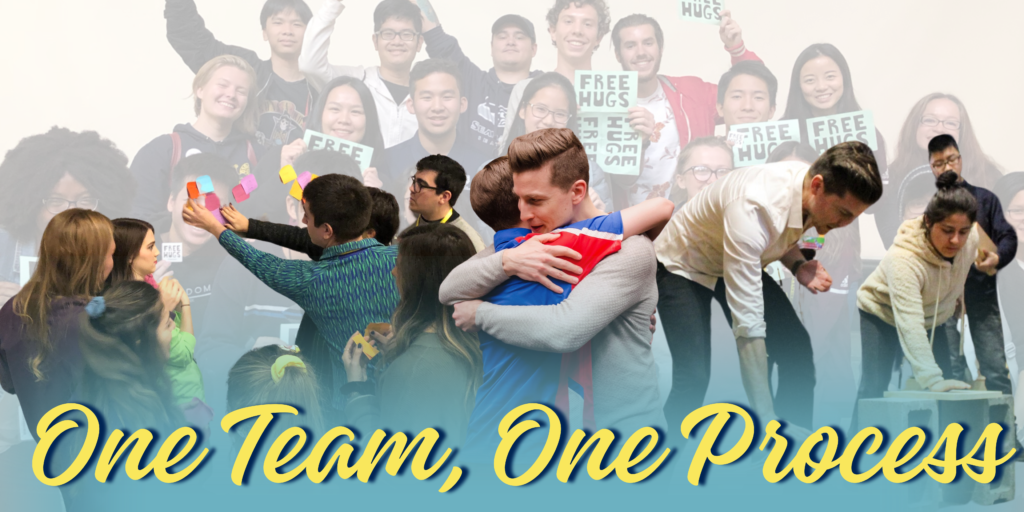Let’s face it: your onboarding process is a disaster. It’s a sink-or-swim approach that’s leaving new members feeling isolated, overwhelmed, and wondering if they made a mistake by joining your community. Let’s break down what a broken onboarding process looks like.
The Cost of a Broken Onboarding Process:
- 25% of new members leave within the first 90 days due to poor onboarding (Source: Society for Human Resource Management)
- 60% of companies don’t have a standardized onboarding process (Source: Gallup)
- Effective onboarding can increase retention by 25% and improve productivity by 11% (Source: UrbanBound)
Houston, we have a major problem here. But how do we learn how to fix it? Think back to your first day at a new job or new community. Were you excited? Nervous? Overwhelmed? As leaders, we want our new members to feel welcome, connected, and engaged to contribute from day one.
The first lesson of our Dance Floor Theory leadership training is that the more friends (connections) you have on a dance floor, the more fun (engagement) that dance is going to be and the longer it’s going to last (retention).
But let’s be real: our onboarding processes are failing miserably. New members are leaving, not because they’re not talented or motivated; it’s because we’re not giving them the support and guidance they need to succeed.
What if I told you that a well-designed onboarding process can be the key to unlocking a Culture of Connection™ within your community? At its core, onboarding is not just about paperwork, policies, and procedures. It’s about introducing new members to the heartbeat of your community: its values, goals, and people.
Intentional onboarding is crucial for building a strong foundation for new members. It’s about creating a sense of belonging, fostering connections, and setting them up for success. Without intentional onboarding, new members are left to navigate your community alone, leading to feelings of isolation and disengagement.
Three Steps to Create an Effective Onboarding Process
Three steps to create an onboarding process that gets new members moving to the rhythm of your community:
Step 1: Prepare the Dance Floor
Before new members arrive, ensure your community is ready to receive them. This means that you have a clear understanding of your values, goals, and what makes your community unique. What’s your community’s purpose? What values do you want to instill in your members? Be honest: do you even know?
Step 2: Invite Them to the Dance
Create an onboarding process that’s engaging, interactive, and personalized. This might include:
- A welcome packet with essential information and resources.
- A buddy system to pair new members with experienced mentors.
- A series of introductory meetings with key team members.
- Group activities to build social bonds and foster connections.
- Regular check-ins are needed to ensure new members feel supported and connected.
Step 3: Teach Them the Moves
Once new members are on the dance floor, it’s time to teach them the moves. This means providing training, resources, and support to help them understand your community’s goals, values, and expectations. What are the key skills or knowledge areas they need to succeed? Don’t assume they’ll figure it out on their own.
Creating a Personalized Onboarding Experience
A one-size-fits-all approach to onboarding won’t cut it. Each new member has unique needs, goals, and preferences. To create a personalized onboarding experience, keep in mind:
- Assessments: Use assessments to understand each new member’s strengths, weaknesses, and learning style.
- Learning Paths: Create customized learning paths based on each new member’s needs and goals.
- Mentorship Programs: Pair new members with experienced mentors who can provide guidance and support.
The Role of Technology
Technology can enhance the onboarding experience, but it shouldn’t replace human interaction. Keep in mind:
- Onboarding Software: Utilize onboarding software to streamline administrative tasks and provide new members with essential information.
- Virtual Orientation: Host virtual orientation sessions to introduce new members to your community and provide an overview of your values and goals.
- Online Communities: Create online communities for new members to connect with each other and ask questions.
Measuring Success:
How do you know if your onboarding process is working? Keep in mind the following metrics:
- Retention Rates: Track retention rates to see if new members are staying engaged.
- Engagement Metrics: Monitor engagement metrics such as
- Event attendance and participation
- Social media activity and engagement
- Volunteer sign-ups and participation
- Feedback and survey responses
- Net Promoter Score (NPS)
- Feedback: Collect feedback from new members to understand what’s working and what’s not.
Your onboarding process is not a one-time event, but a continuous process. Regularly assess and improve your onboarding process to ensure it remains effective and engaging.
Successful Onboarding:
Thorns, an organization that was failing in their onboarding, implemented a new personalized onboarding process that included assessments, customized learning paths, and mentorship programs. As a result, they saw a 30% increase in retention rates and a 25% increase in engagement metrics.
Common Onboarding Mistakes to Avoid
- Assuming new members will figure it out on their own.
- Overwhelming new members with too much information at once.
- Failing to provide clear expectations and goals.
- Not providing opportunities for socialization and connection.
Don’t let your onboarding process be a disaster. Take the first step today to create a Culture of Connection™ within your community. Remember, effective onboarding is not just a nice-to-have, it’s a must-have for building a thriving community that retains its members and achieves its goals.
A well-designed onboarding process is crucial for building a strong foundation for new members. By creating a personalized experience, leveraging technology, measuring success, and continuously improving, you can set new members up for success and help them feel connected to your community’s purpose.
Don’t wait – take action today and start building a Culture of Connection within your community.




